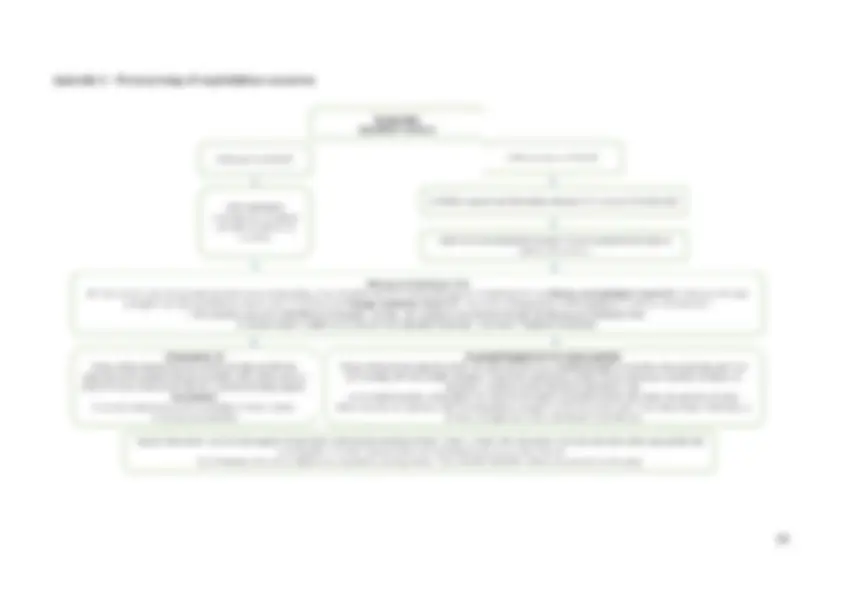











Study with the several resources on Docsity

Earn points by helping other students or get them with a premium plan


Prepare for your exams
Study with the several resources on Docsity

Earn points to download
Earn points by helping other students or get them with a premium plan
Community
Ask the community for help and clear up your study doubts
Discover the best universities in your country according to Docsity users
Free resources
Download our free guides on studying techniques, anxiety management strategies, and thesis advice from Docsity tutors
Milton Keynes' strategy for preventing and tackling child exploitation. It covers priorities, preparation, protection, and pursuit of perpetrators. The strategy emphasizes a multi-agency coordinated approach, early intervention, and community involvement.
Typology: Lecture notes
1 / 15

This page cannot be seen from the preview
Don't miss anything!










Pursue
397 children were reported missing 1173 times – this includes 64 children placed in Milton Keynes by other Local Authorities who were reported missing 282 times. Following referrals to the National Referral Mechanism (NRM - Modern Slavery Act 2015) - 19 Reasonable Grounds (RG) and 2 Conclusive Grounds (CG) decisions were made for children. Levels of concern Milton Keynes Safeguarding Partnership has adapted and added to the NWG (National Working Group) risk categories that were originally devised to address the exploitation of children. For more detail see the Exploitation Strategy Levels of Concern supporting document Multi-agency co-ordinated approach By increasing the knowledge and sharing the insight of those who come into contact with exploited children (professionals, statutory agencies and the wider community) we can build and maintain an accurate, contemporary, local profile of exploitation. This will provide a comprehensive understanding of the types of risk, locations, victims/survivors, and those who perpetrate or facilitate this abuse. A shared objective to ensure the response is cohesive and complementary to other services will support more timely flow of relevant information, ensuring earlier identification and support to victims, and minimise gaps in services. The implementation of a Contextual Safeguarding^1 approach will enable scope far beyond the individual and will address (^1) https://www.csnetwork.org.uk/en/about/what-is-contextual-safeguarding Community School/ College/Work Peers/Friends Family Individual
existing and potential risks in the wider contextual environment in which exploitation is taking place. Recent developments within Thames Valley Police (TVP) in reponse to HM Government Violent Crime Reduction Strategy have seen the creation of a Violent Crime Taskforce (VCT). Details of this team and the wider local police response are published in the Milton Keynes Local Policing area - Violent, Missing & Exploitation Reduction Framework. For additional information see Identifying and Responding to Child Exploitation. Looked After Children (LAC) Children who are looked after are at an increased vulnerability to being exploited and it is the responsibility of the local authority by whom the child is ‘looked after’ to have robust interventions to reduce this vulnerability and to respond proactively to concerns identified. Social workers, Independent Reviewing Officers (IROs) and those who support looked after children, either in their residential setting or though support work, need to have access to training to increase practitioners and support staff awareness of exploitation. Other local authorities who place looked after children within Milton Keynes local authority boundary (Host Authority) will be expected to provide MK CSC details of exploitation, trafficking, gang association, missing person occurrences and sexually problematic behaviour as well as completion of a TVP ‘Grab Pack’. The ‘Grab Pack’ is where information relating to a child who regularly goes missing, or is the subject of exploitation concerns, is collated on one form within Thames Valley Police. It enables the police to have quick and ready access to information about either a local or a placed child in Milton Keynes so that officers can refer to it in their response to locating the child. Milton Keynes Local Authority will develop and maintain a list of approved premises that have met standards set out by the local authority and undergo regular checks to ensure compliance. Children placed by MKC outside of Milton Keynes where there are concerns relating to exploitation and trafficking will be raised within Milton Keynes Strategic Exploitation Panel (SEP) meeting.
MK Youth Risk Meeting This multi-agency meeting is chaired by the Violent Crime Taskforce (VCT) and provides a forum to ensure effective co-ordination of agencies to support disruption in respect of youth violence, gang/ASB groups and County Drug Lines (CDL) networks. Strategic Exploitation Panel (SEP) The multi-agency Strategic Exploitation Panel monitors the intervention supporting children with significant exploitation or missing concerns. SEP will problem-solve and address barriers to implementing effective plans by offering strategic support, protective and disruption options to address places, individuals, groups and organisations of concern. SEP will identify and coordinate strategic multi-agency approaches to specific themes of concern around exploitation highlighted by other multi-agency meetings including: MAPPA, MEP, MK Youth risk meeting, Cross-Border Group, Localities Meeting, Targeted Tasking Co- ordination Group (TTCG) and Complex Strategy Meetings. Cross Border Group (CBG) The purpose of the Cross-Border Group (CBG) is to build collaborative working relationships with neighbouring authorities. It is a point of contact for members to discuss individual and shared concerns where exploitation may be occurring across counties, and enables good practice from other areas to be disseminated. Locality meeting This is a quarterly multi-agency forum between school safeguarding leads and partner agencies from either the North or South of Milton Keynes. Its aim is to identify at the earliest opportunity concerns relating to children’s behaviour that could be indicative of exploitation, missing or youth violence. It also provides information to schools on current trends as well as discussing potential perpetrators, and local areas of concern associated with exploitation.
Full details of the function of each meeting/panel can be found in the MK Together Missing and Exploitation Panel Functions supporting document DCI Risk Meeting TVP meeting in respect of children where TVP are actively engaging in reducing the child’s violence, exploitation and missing concerns. Police can check governance and allocate additional resources where needed. CSC and YOT representative are also present at this meeting. Full details are contained in the TVP ‘Milton Keynes Local Policing Area - Violence, Missing & Exploitation Reduction Framework’. Output and outcome measures Conducting Return From Missing Interviews (RFMI) in a timely manner, face-to-face with the child, supports most effective intervention:
Appendix B – Abbreviations ASB Anti Social Behaviour CCE Child Criminal Exlpotation CDL County Drug Line CSE Child Sexual Exploitation CSEP Child Sexual Exploitation Project Worker DMM Daily Management Meeting (TVP) ESP Early Support Project IRO Independent Reviewing Officer LAC Looked After Child MASH Multi Agency Safeguarding Hub MAPPA Multi Agency Public Protection Arrangements NRM National Referral Mechanism OCG Organised Crime Group RFMI Return From Missing Interview TTCG Targetted Tasking Coordination Group TVP Thames Valley Police
Apendix C - Process map of exploitation concerns